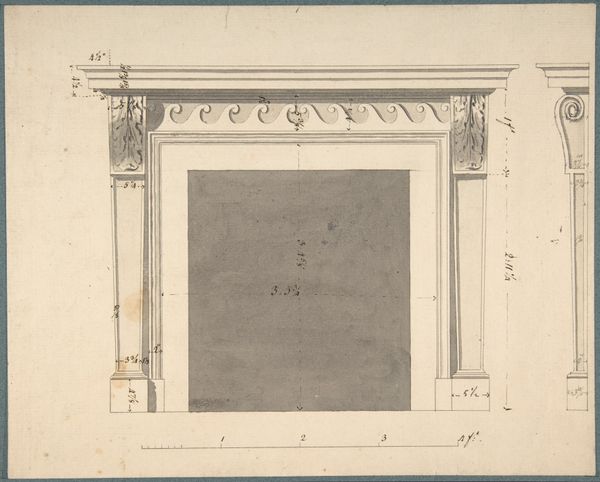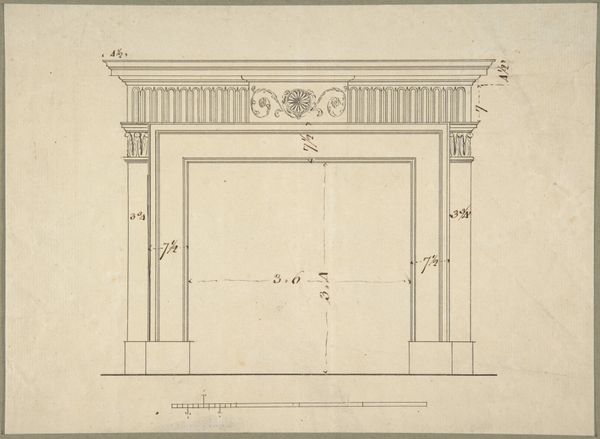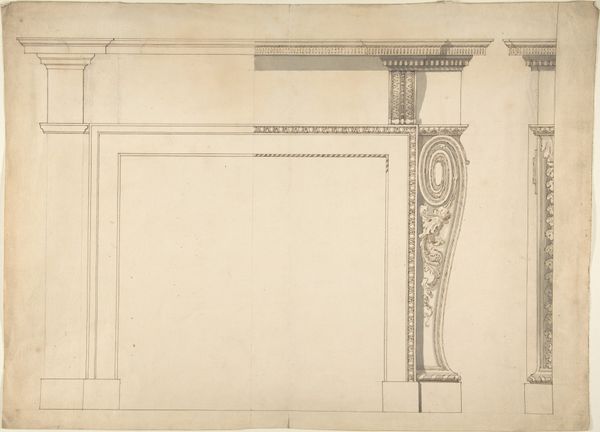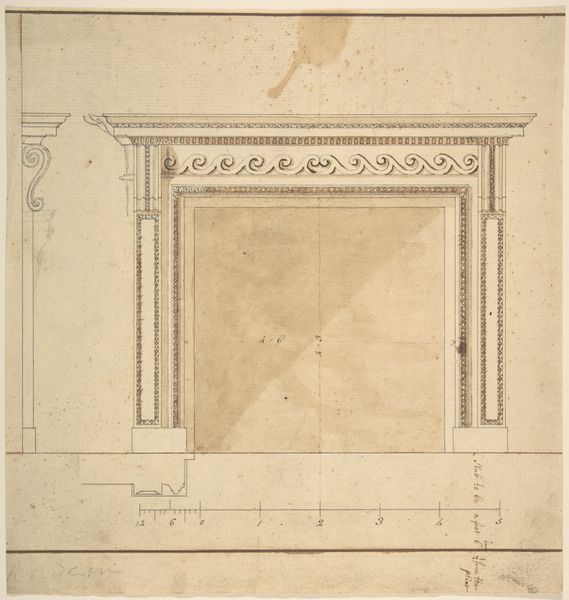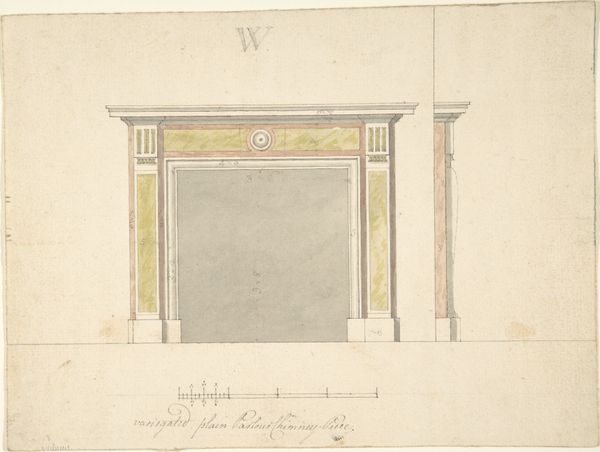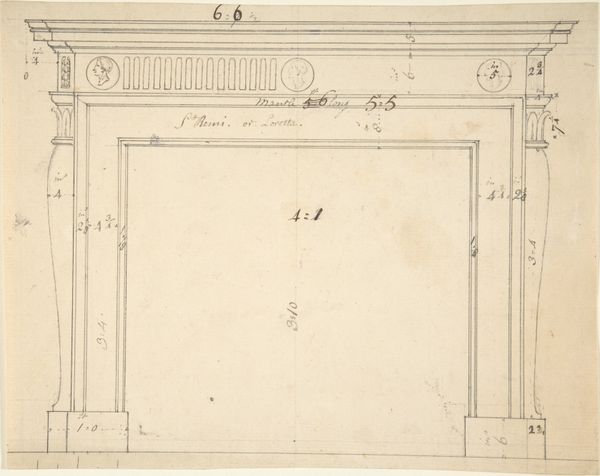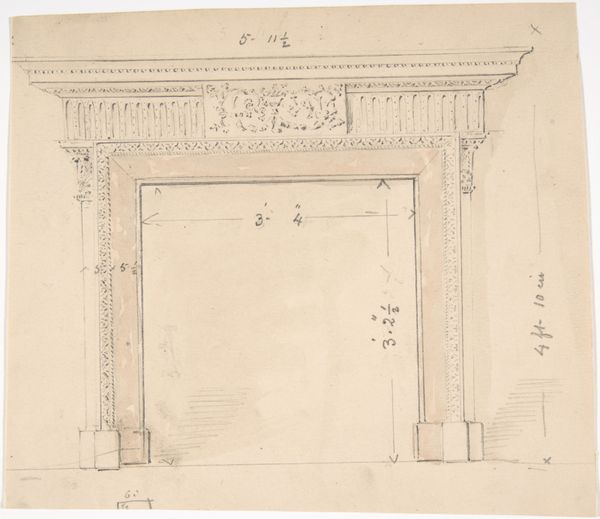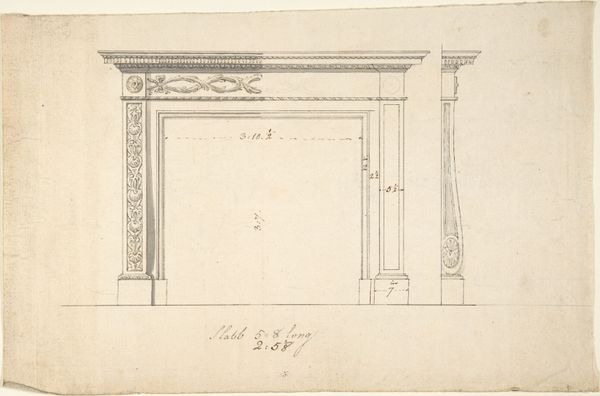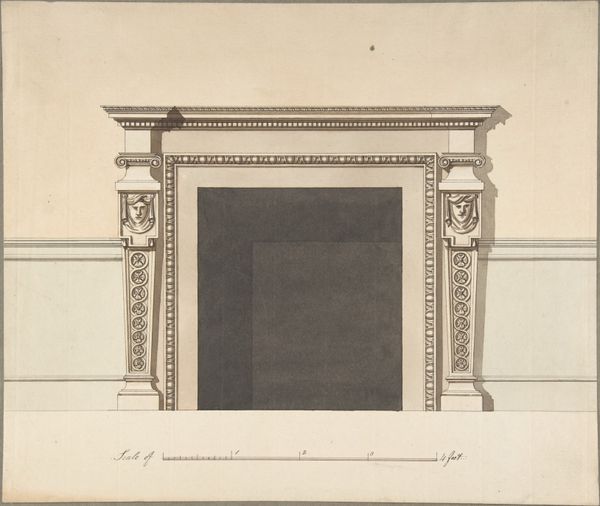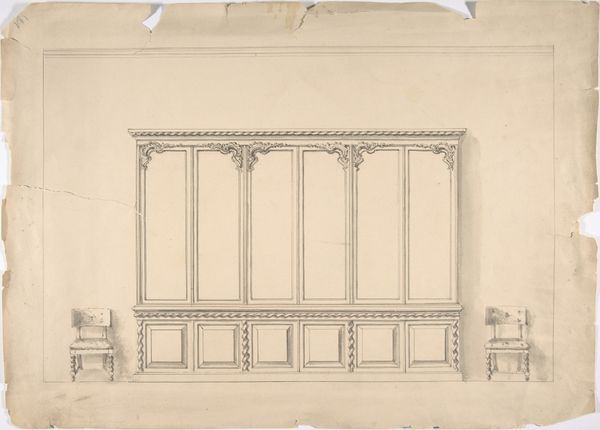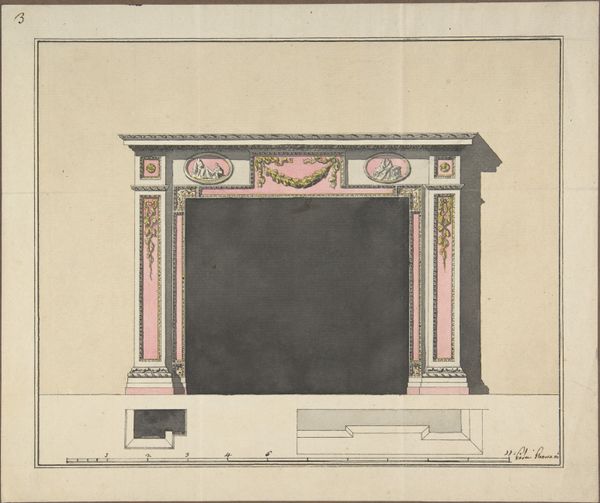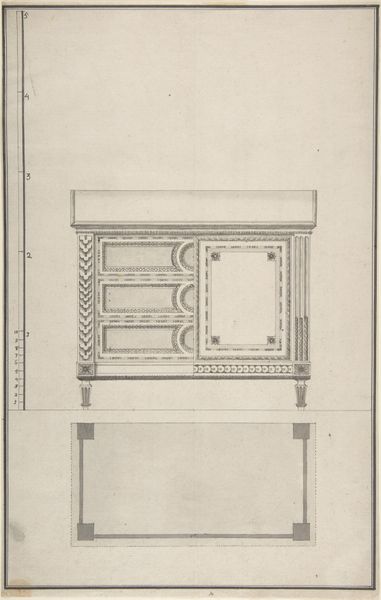
drawing, print, paper, ink, architecture
#
drawing
#
neoclacissism
# print
#
paper
#
ink
#
architecture
Copyright: Public Domain
Curator: This drawing presents a design for a chimneypiece created by Sir William Chambers sometime between 1740 and 1800. It’s rendered in ink on paper, showcasing detailed architectural plans. Editor: It’s quite striking; the precision and subdued color palette give it a very clean, almost austere feel. I'm drawn to how the materials are subtly implied—you can almost feel the cool smoothness of the marble. Curator: Precisely! Chambers was a leading figure in the Neoclassical movement, and this drawing reflects the era's emphasis on order and rationality. We see here an idealized vision, far removed from the labor and grit involved in actually quarrying and working the stone. It smooths out that production process, quite literally. Editor: I suppose, then, that this piece isn't just a plan; it's also a statement. Given its potential placement within a grand home, what social function would such a chimneypiece serve? A statement of power? Refined taste? Curator: Undoubtedly. These elements were crucial to constructing and maintaining social status. Think of the patrons: wealthy merchants and the aristocracy eager to showcase their cultural sophistication. A design like this wasn’t just about warmth; it was about conspicuous consumption, about communicating values of control and classical learning to their visitors. Editor: Looking at it again, it's fascinating how it presents not just the front elevation, but a separate profile as well. It reveals different levels of design planning at play. Curator: And we need to understand the larger social context of display. Architectural drawings such as these weren’t always considered art in the same way paintings were. Their function was to serve the elite, to project status, and in that way the political history is also embedded in every careful line and measurement on this paper. Editor: So it’s both beautiful and a potent signifier, a nexus point of material, labor, and social ambition! I find that interplay genuinely thought-provoking. Curator: I agree. It underscores how seemingly simple designs can reflect very intricate networks of material production and deeply embedded socio-political meanings.
Comments
No comments
Be the first to comment and join the conversation on the ultimate creative platform.
